Blue anise sage (Salvia guaranticia) is an excellent addition to your pollinator or butterfly garden. Its gorgeous, small peacock blue flowers attract hummingbirds, butterflies, honeybees, bumblebees, and other insects. Hummingbirds love to feed on these blooms, which are their favorite food plant in my garden. Best of all, this salvia with blue flowers is perennial, meaning it will grow back each year.
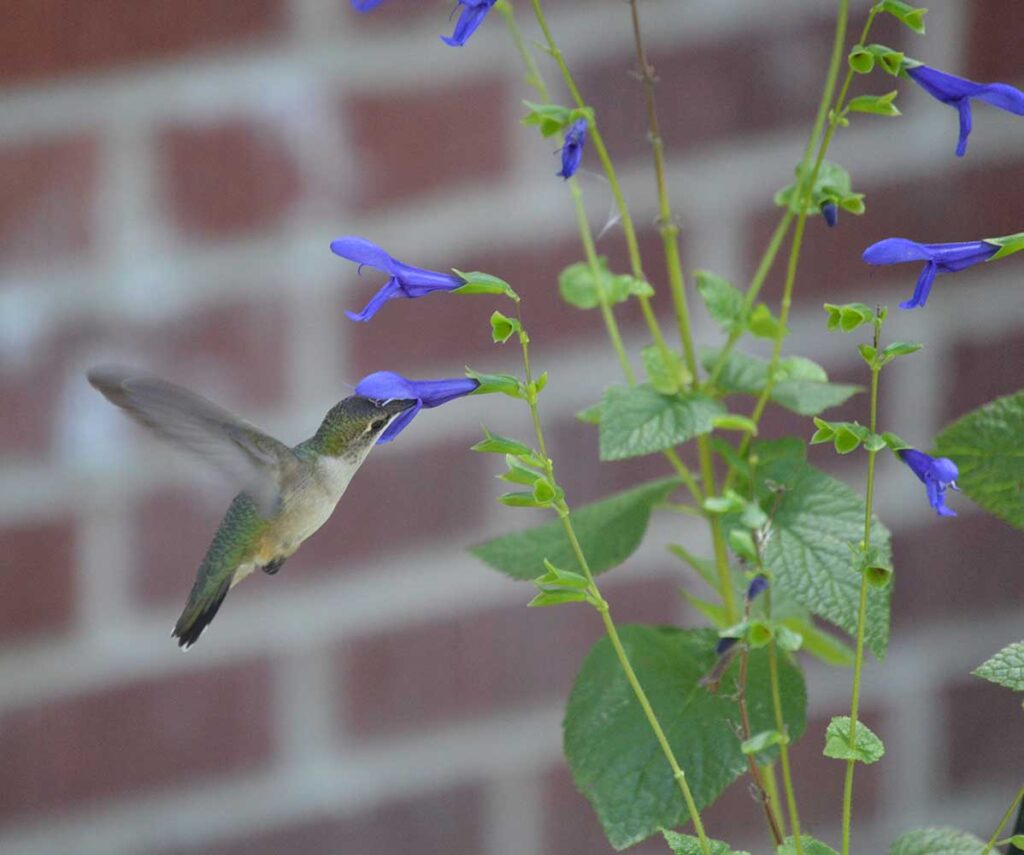
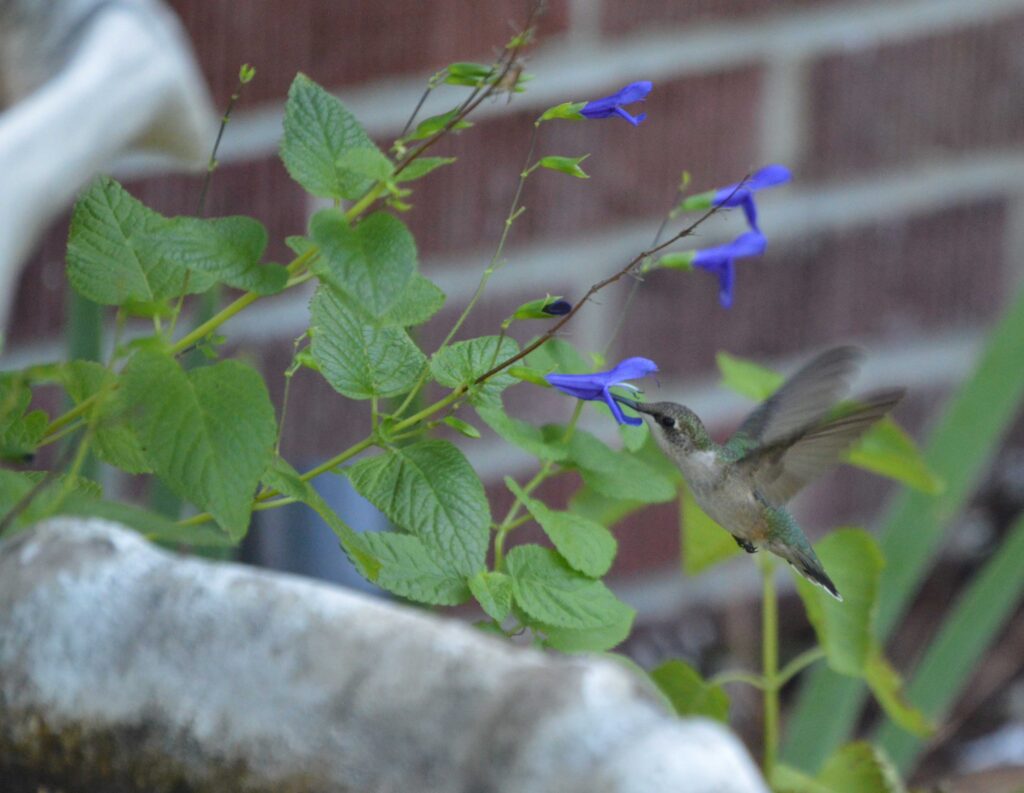
Benefits of the Blue Anise Sage Plant and Flowers
So why would you want to plant blue anise sage in your garden? Here are some of the many benefits of this plant.
- It’s a perennial
- It’s drought-tolerant
- It is rabbit-resistant and deer-resistant
- It grows fast
- Very few disease and pest issues
- It has gorgeous cobalt blue flowers
- It is perfect for pollinator gardens
- Hummingbirds love it
Problems with Blue Anise Sage Plants
If you water these sage plants from the top and they are planted closely together, they might get powdery mildew. If this is the case, you may need to thin them out and begin watering at the base instead of from the top. Remove any mildewed portions of the plant and let it regrow.
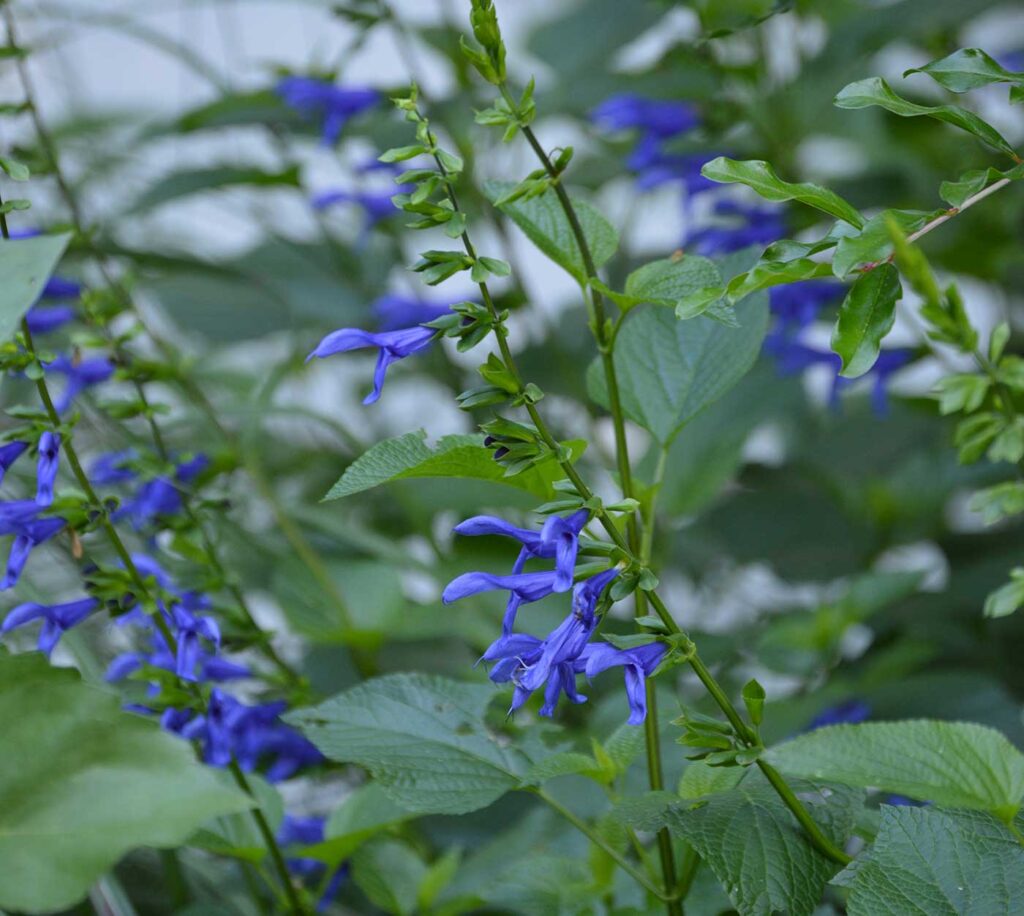
How to Grow Blue Anise Sage in Your Garden
This low-maintenance plant is so easy to grow. Once it is established, there isn’t much you need to do to keep it alive.
Light and Soil Conditions
This perennial flowering plant prefers full sun and well-drained soil. It can grow in part shade, but it will produce fewer flowers, and the tall plants might tend to fall over.
If the soil remains wet for too long, the tubers of this plant will begin to rot, and eventually, the plant will die. That’s why you should plant it in well-drained, rich soil. If you have clay soil, mix in a lot of mulch and compost to make the soil more friendly for this salvia.
Water Requirements
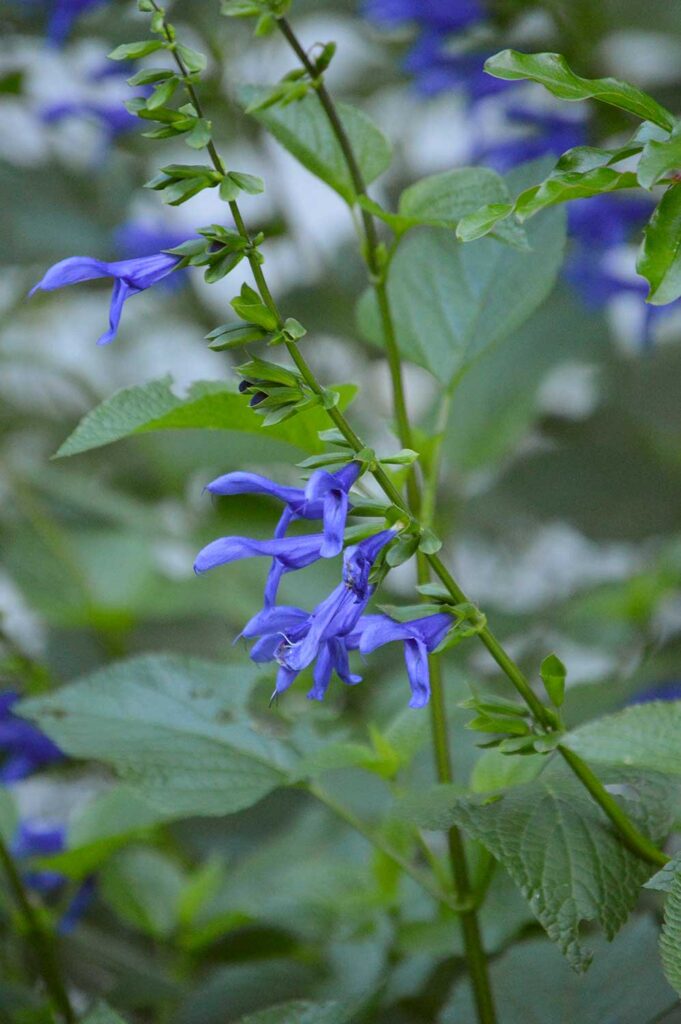
When you first plant this salvia, you must water it regularly. Once it is established, it is drought tolerant. However, during long stretches of dry and hot weather, you should water it weekly to keep the plant blooming. Otherwise, the flowers will die back but typically rebloom once the rains return.
How to Propagate Blue Anise Sage
Blue anise sage spreads somewhat quickly. Every year, I dig up a clump from my garden and share it with a neighbor. We plant it, water it for a few weeks, and then ignore it; it spreads and blooms. When you dig it up to divide it, try to get one of the horizontal tubers for the best results.
I have even transplanted parts of this plant that I have pulled up from the ground because I didn’t want it to grow where it was growing. If you keep it well-watered while it puts out new roots in the new location, it is easy to transplant it.
You can also take softwood cuttings from this blue salvia and root them in soil. Keep the soil evenly moist but not overly wet. After a few weeks, the cutting will take root. When you plant it in its final location, regularly water it for another few weeks to give it time to develop more roots.
Do You Cut Back Blue Anise Sage aka Hummingbird Sage?
That’s a tricky one – it depends. In my garden, I leave the dead stems for the whole winter and only remove them when the new growth is about 4 inches tall. This allows the stems to serve as homes for bees and other insects during the winter. However, the stems stay upright in the winter here in zone 7b. You may want to trim them back before this time in other zones.
When I’m ready to remove the brown stems, I snap them off with my hands or use hand pruners to trim them off as close to the ground as I can.
Should I Deadhead Blue Anise Sage Flowers?
Again, the answer is that it depends. I never deadhead these blue flowers because I don’t have the time to do it. In my opinion, my sage plants still bloom very well without the deadheading. But if you want the plant to continue to prolifically bloom throughout the whole blooming season, deadheading spent flowers is the way to go.
If you do want to deadhead your plants, take your hand pruners and cut the spent flower to the top of the first leaves on that stem. Here is a great video to show you how to prune the blue anise sage flowers.
Cultivars
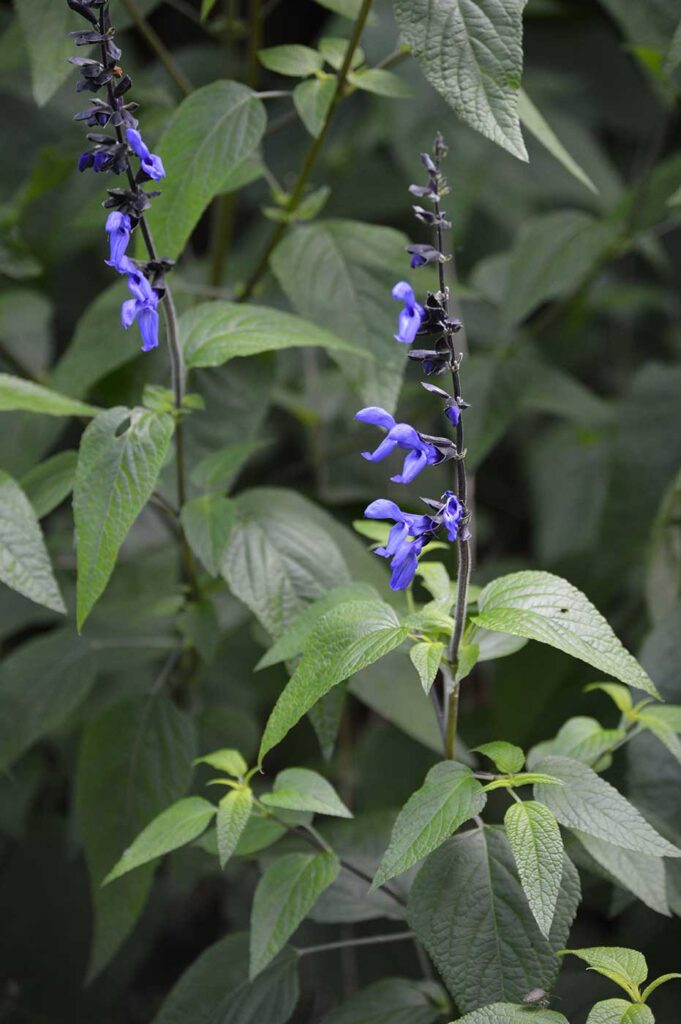
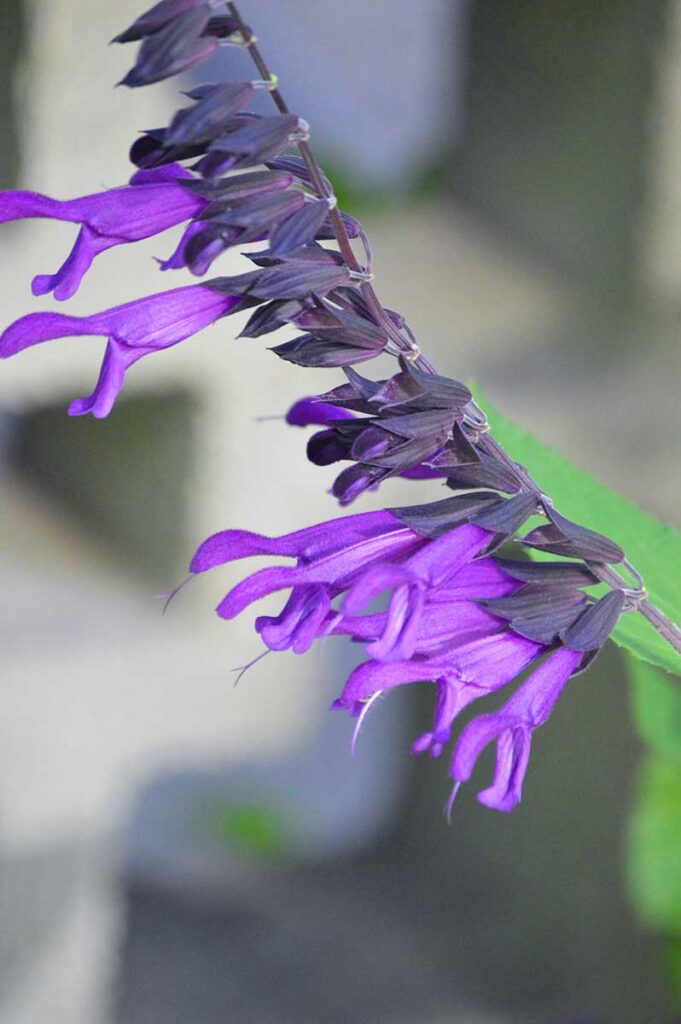
Black and Blue Salvia
There are several cultivars of Salvia guaranitica, but the black and blue salvia stands out. It has black calyces and the same peacock blue flowers, making a bold statement. If you’re looking for a real eye-catcher for your garden, this is a must-have.
Purple Majesty Anise Sage
This is another gorgeous color of flower of Salvia guaranitica. It has purple flowers with a dark purple calyx.
Other Common Names for Blue Anise Sage
As with all plants, this sage has many common names. These include anise sage, anise-scented sage, Brazilian sage, and hummingbird sage. For the longest time, I knew it simply as blue salvia.
Plant Characteristics
- Common names: anise sage, anise-scented sage, Brazilian sage, and hummingbird sage
- Scientific name: Salvia guaranitica
- Description: Tall flowering plant perfect for pollinator gardens with azure blue flowers
- Plant height: 3 to 5 feet
- Plant spread: 2 to 4 feet
- USDA Hardy Zones: 7 to 10
- Light requirements: full sun to part shade. Blooms best in full sun.
- Water requirements: low to average
- Bloom time: mid-summer to fall
- Soil requirements: rich, well-drained soil
- Flower color: blue
- Flower shape: tubular
- Plant type: flowering plant, perennial in some zones, annual in others,
- Leaf color: dark green
- Wildlife value: nectar for hummingbirds, butterflies, and bees
- Type of garden: pollinator garden
- Benefits: drought-tolerant, deer-resistant, rabbit-resistant, low-maintenance
- Native range: nonnative in the US, native to southern parts of South America
Other Salvias That I Recommend
If you love salvias like I do, there are many different types to include in your garden. They are all easy to grow and low-maintenance once established. Many are perennial, but it depends on your zone. Take a look at these:
- Mexican salvia
- Pineapple sage
- Hot lips salvia
- Lyreleaf sage (this one is native)
- Indigo spires salvia (great for bees!)
